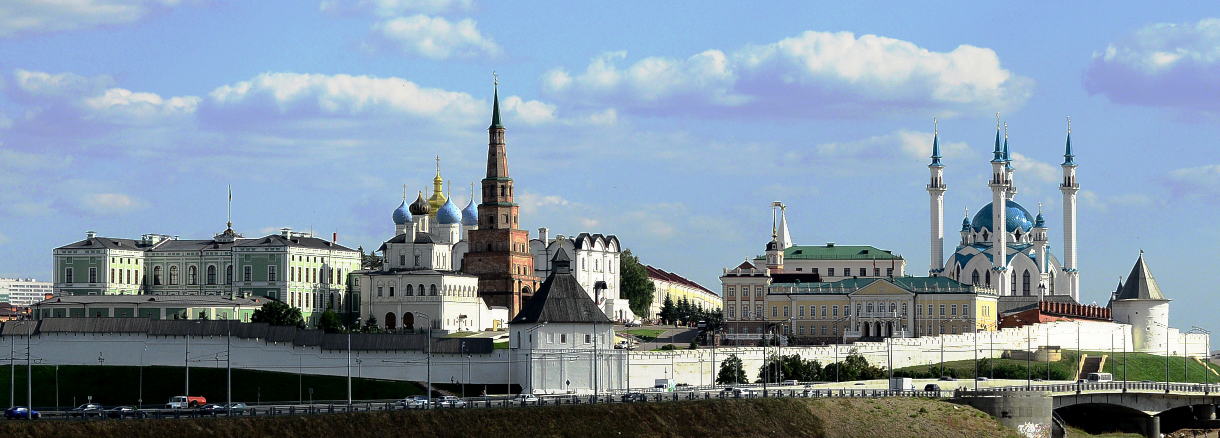The Kazan Kremlin is located on the top of a hill on the left banks of the Volga and Kazanka rivers. It became a white-stone fortress in the second half of the 16th century, before that the outpost had been defended by massive oak walls. There is a whole range of architectural monuments in the territory of the Kazan Kremlin, among them the Syuyumbike Tower, Governor’s Palace (current residence of the President of the Republic of Tatarstan), Public Offices, Cadet School, archeological remains of one of the most representative buildings of the complex of the khan’s court, khan’s mosque and tombs of Kazan khans dating back to the 15th-16th centuries that are currently displayed as museum pieces. An Islamic mosque, Kul Sharif, and an Orthodox church, Annunciation Cathedral, stand side by side inside the Kazan Kremlin and represent a perfect example of a peaceful coexistence between two religious confessions.
The Kremlin’s premises comprise administrative buildings and cultural institutions, including the Khazine National Art Gallery, Museum of Natural History of the Republic of Tatarstan, Great Patriotic War Memorial Museum, Hermitage Kazan Centre (branch of St. Petersburg’s State Hermitage Museum), Museum of Islamic Culture.
In 2000, the Kazan Kremlin was included in the UNESCO World Heritage List.
